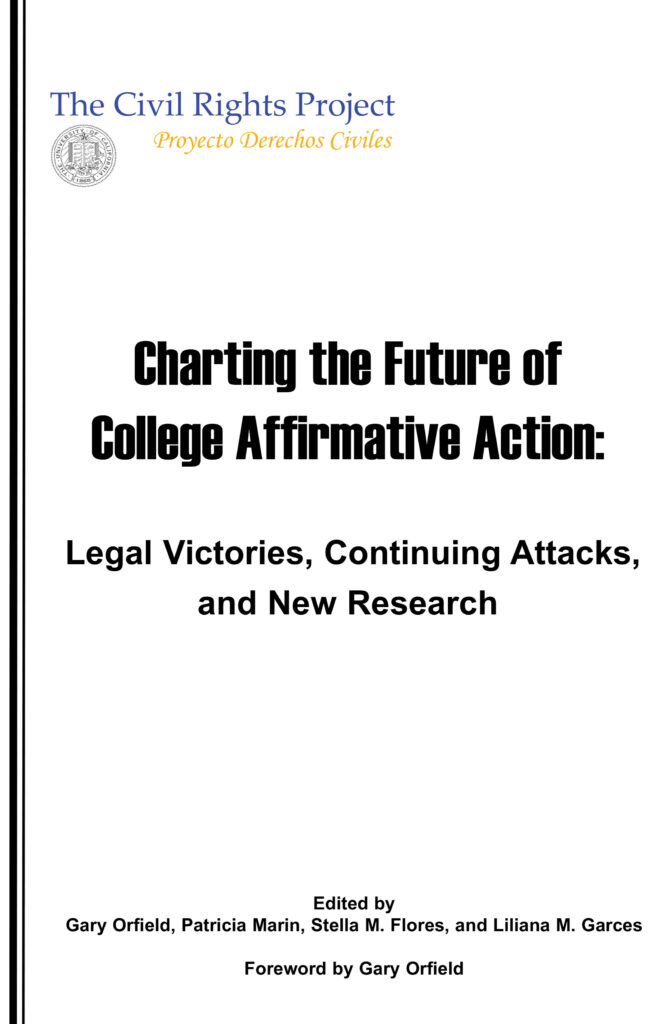Foreword
The right of universities to take race-conscious action to diversify their student bodies rested for a quarter century on a U.S. Supreme Court decision in the 1978 Bakke case, which left almost no one satisfied and many conservatives convinced that an increasingly conservative Supreme Court would outlaw affirmative action. After a huge national mobilization over two crucial cases against the University of Michigan which were decided in 2003, Grutter v. Bollinger and Gratz v. Bollinger, it seemed likely that the surprisingly positive decision from the Court’s majority in Grutter would set a relatively clear path for the next quarter century. In that decision, from a Court much more conservative than the Bakke Court, Justice O’Connor, writing for the majority, solidified the rationale for affirmative action and expanded on its justifications. This seemed to produce a clear guideline in place of the Bakke decision, which lacked a clear majority rationale. In Bakke the Court had rested the continuation of affirmative action on a single rationale articulated by Justice Powell—that diversity produced better education for all students—which relied primarily on a report by a Harvard University faculty committee. In the Grutter decision, the Court took a much broader view of the justifications for affirmative action, citing the critical importance of training leaders from all racial and ethnic groups, as well as the importance of diversity for the functioning of major institutions such as the military. The decision also considered and rejected the idea that colleges must exhaust non-race-based strategies to obtain and maintain racial and ethnic diversity, and it showed deference to educators in making decisions about admissions policies. Overall, Grutter seemed to be a sweeping victory for supporters of affirmative action.
No sooner was the ink dry on the decision, however, that opponents of affirmative action, who happened to control the U.S. Departments of Education and Justice as well as the federal civil rights enforcement offices, began to narrow the interpretation of Grutter. Across the country conservative legal action groups wrote letters to leaders of higher education institutions threatening to sue them unless they stopped affirmative action measures. Federal civil rights officials strongly suggested that colleges were obliged to try non-racial strategies and claimed that such strategies were workable. In other words, the opponents of affirmative action attempted to interpret the law as if they had won the case.
Concern over the future of race-conscious policy was intensified in 2006 when Justice O’Connor, the author and the deciding vote on Grutter, resigned from the Court and was replaced by Justice Alito, whose record was strikingly conservative. Concern increased when the Supreme Court accepted for review two cases about voluntary integration policies in public K-12 schools in which the lower federal courts had relied on the Grutter decision to uphold race-conscious student assignment plans.
On June 28, 2007, the Supreme Court issued its ruling in the voluntary school integration cases (Parents v. Seattle School District No.1 and Meredith v. Jefferson County). Although the Court struck down the integration policies in these two cases, it acknowledged once again that universities have a compelling interest in a diverse student body—an important part of which is racial diversity—and that they may consider race as a factor in their individualized, multi-dimensional admissions decisions to further that interest. The Court’s reaffirmation of the ruling in Grutter spoke directly to and repudiated the efforts of conservative groups that had urged the Court to adopt a sweeping race-blind policy that would undermine Grutter.
Even with this recognition of the use of affirmative action in higher education admission policies from a more conservative Court than Grutter, we can expect ongoing controversy. It is unreasonable to expect a deeply divided country to come up with a clear and simple, lasting answer. It is obvious, however, from the national mobilization of university, business, and military leaders over the University of Michigan cases that there is a strong desire in universities and other major institutions to find ways to keep our campuses open to the increasingly diverse pool of high school graduates in a country in the midst of a rapid and profound racial transition. The lesson in those states where affirmative action has been outlawed is that institutions will try to find ways to pursue this goal and that it will be very difficult.
In compliance with the UC Open Access Policy, this report has been made available on eScholarship:
